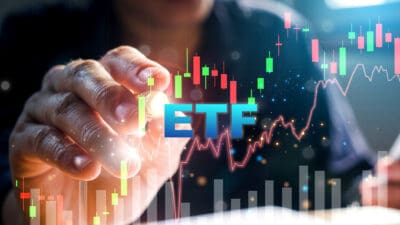If you're not comfortable investing in a very broad range of ASX companies, then an ASX index fund offers a great alternative.
Indeed, as legendary investor Warren Buffett has previously advised, "A low cost index fund is the most sensible equity investment for the great majority of investors."
Now, there is a range of exchange-traded funds (ETFs) that provide instant diversity and aim to track the performance of the S&P/ASX 200 Index (ASX: XJO) or S&P/ASX 300 Index (ASX: XKO).
Vanguard Australian Shares Index ETF (ASX: VAS), for example, offers exposure to the top 300 listed Aussie companies that you'll find on the ASX 300.
As you'd expect, the top three holdings of the ASX index fund correspond to the three biggest companies on the ASX by market cap. Namely BHP Group Ltd (ASX: BHP), Commonwealth Bank of Australia (ASX: CBA) and CSL Ltd (ASX: CSL).
Two other popular ASX index funds that aim to track only the top 200 Aussie companies listed on the ASX 200 are the iShares Core S&P/ASX 200 ETF (ASX: IOZ) and the BetaShares Australia 200 ETF (ASX: A200).
All three ETFs have low management fees.
So, just how much would I have today if I'd invested $5,000 in these funds five years ago?
Let's dig in.
How much have these ASX index funds returned?
First, turning to the ASX 200 five years ago, on 23 July 2019, we would have been about eight months out from the massive pandemic market crash of February 2020.
But with stocks roaring back from late March 2020, the ASX 200 and the ASX index funds that aim to track them, have managed to deliver some healthy gains.
Over the past five years, the ASX 200 has gained 17.34%. Of course, that doesn't include the dividends many of these companies pay shareholders.
To see how much of an impact those dividends can have on our returns, we turn to the S&P/ASX 200 Gross Total Return Index (ASX: XJT), which includes all cash dividends reinvested on the ex-dividend date. The total return index has gained 41.97% over the five years.
So, how do our ASX index funds stack up?
Well, as at 30 June, the iShares Core S&P/ASX 200 ETF has delivered a total return of 41.4%.
That would have seen my $5,000 investment grow to $7,070 today.
As for the BetaShares Australia 200 ETF, as of 22 July, the ASX index fund had returned 42.8% over five years. This would have turned my $5,000 investment into $7,140 over five years.
And the Vanguard Australian Shares Index ETF, which you'll recall tracks the top 300 stocks listed on the ASX 300, has returned 41.8%, as at 30 June. Certainly! This means that my $5,000 investment from five years ago would have grown to $7,090 today.









